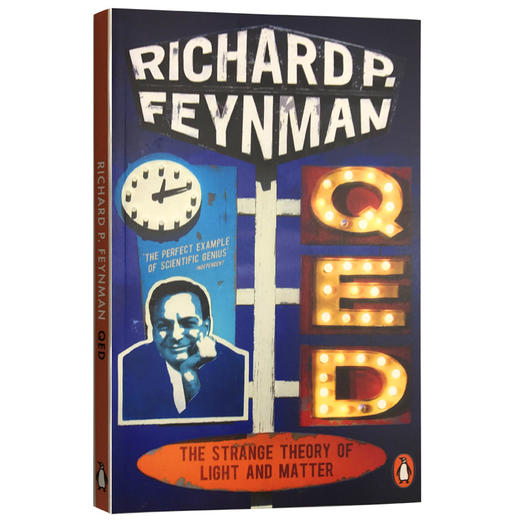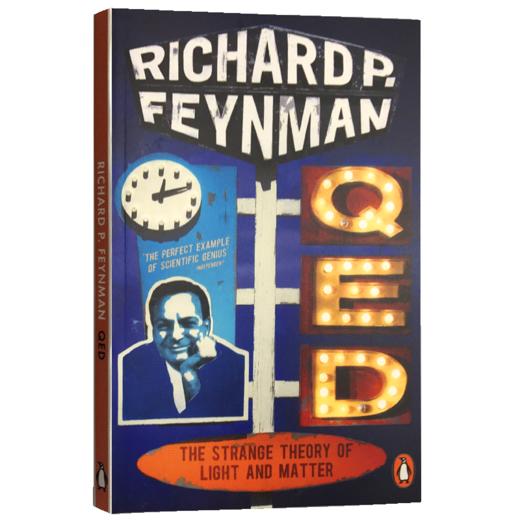光和物质的奇妙理论 英文原版科学类书籍 QED The Strange Theory of Light and Matter 量子电动力学 费曼 英文版进口英语书
| 运费: | ¥ 0.00-999.00 |
| 库存: | 15 件 |
商品详情
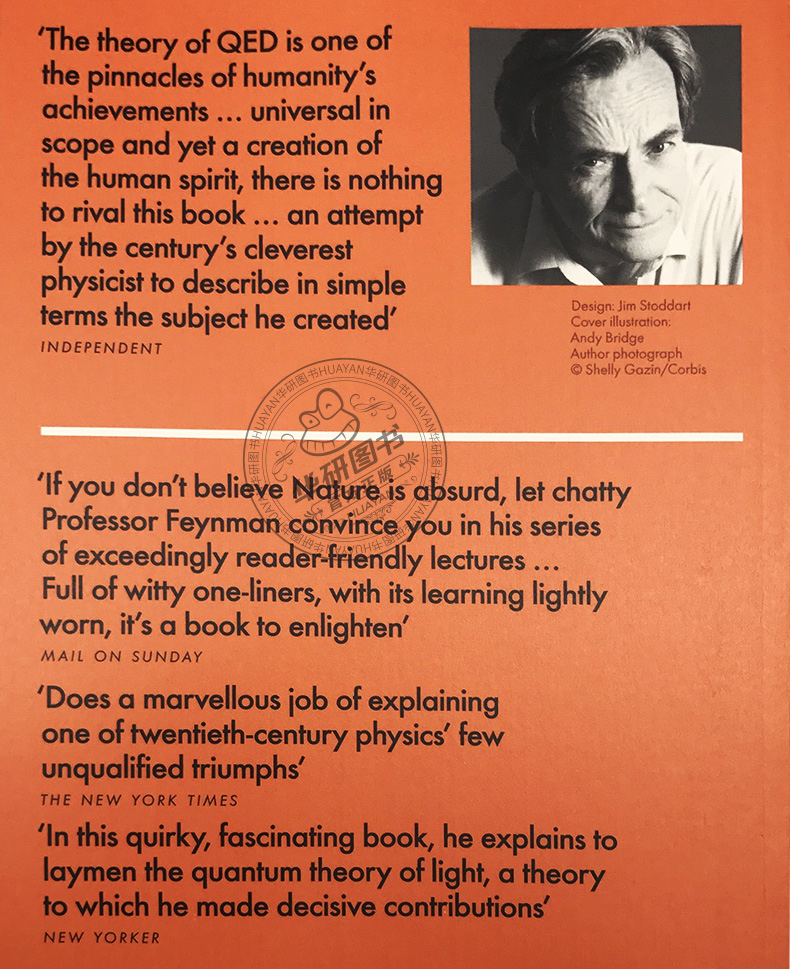
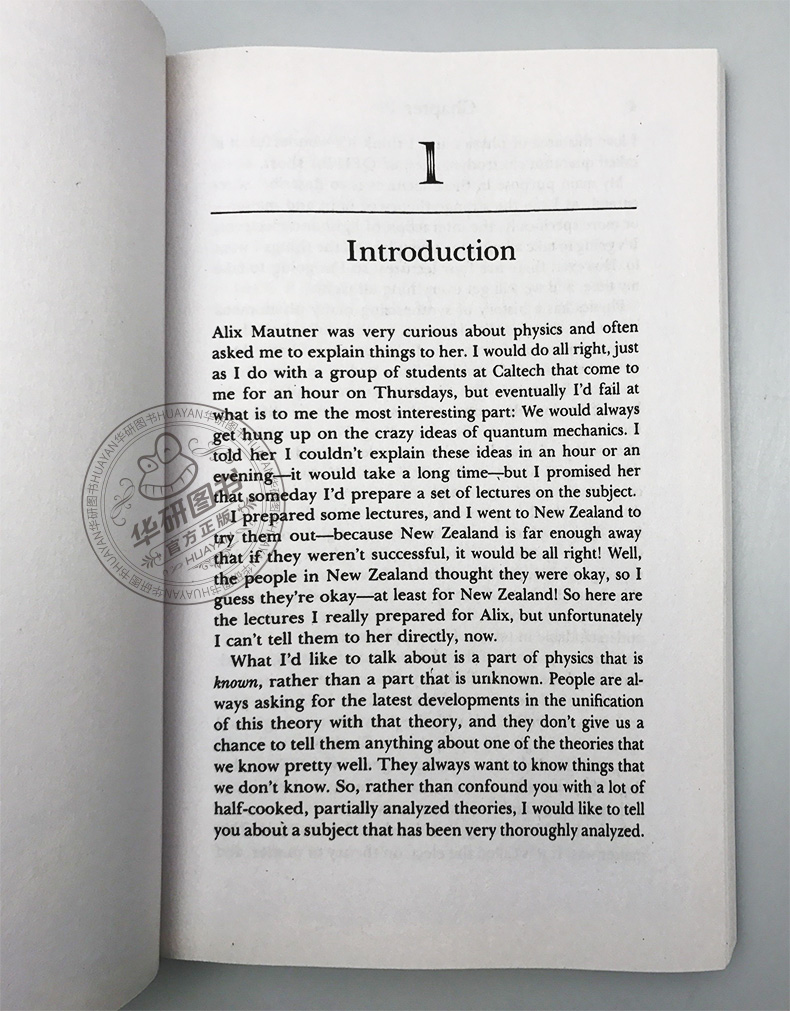

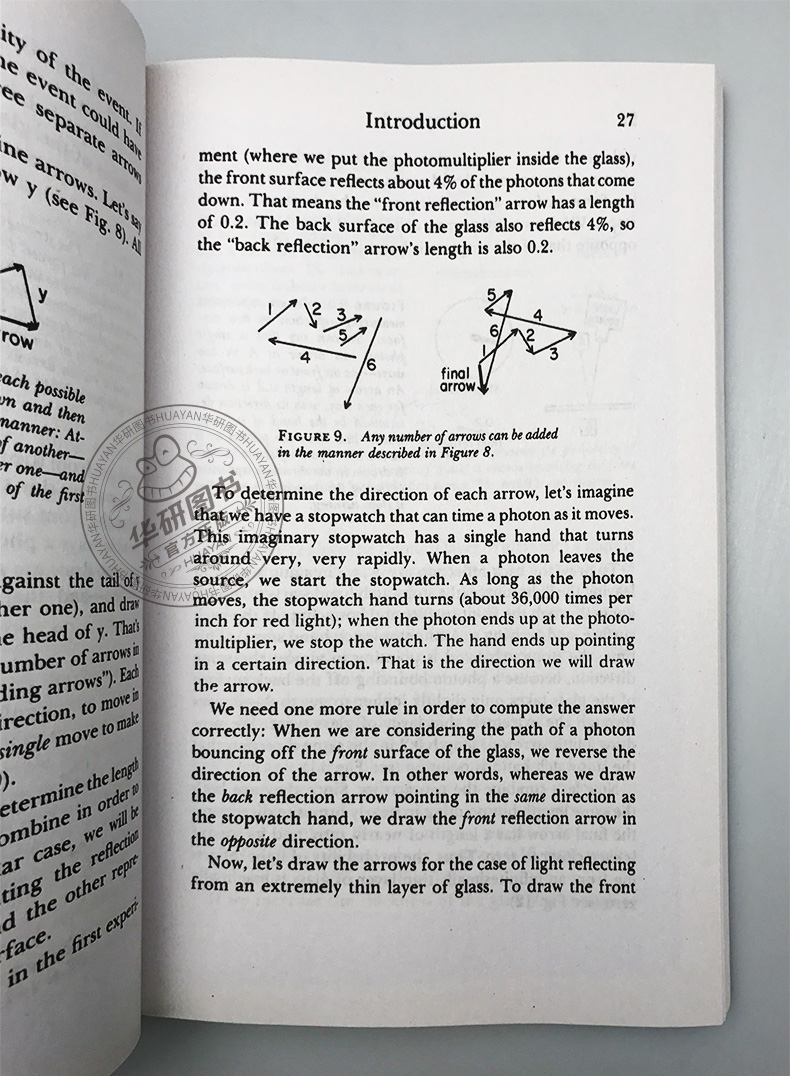
 书名:QED: The Strange Theory of Light and Matter光和物质的奇妙理论
书名:QED: The Strange Theory of Light and Matter光和物质的奇妙理论
作者:Richard P Feynman
出版社名称:Penguin
出版时间:2007
语种:英文
ISBN:9780140125054
商品尺寸:19.8 x 1 x 12.9 cm
包装:平装
页数:164(以实物为准)
 美国物理学教授R·P·费曼的原创精神简直是不可遏制的。在QED: The Strange Theory of Light and Matter《光和物质的奇妙理论》这本离奇、绝妙的书中,他向外行读者介绍了光的量子理论。
美国物理学教授R·P·费曼的原创精神简直是不可遏制的。在QED: The Strange Theory of Light and Matter《光和物质的奇妙理论》这本离奇、绝妙的书中,他向外行读者介绍了光的量子理论。
通过这谈兴浓郁、轻松有趣的四个章节,费曼没用一个公式就向广大读者讲解了QED,而他本人则为这个理论提出了一个很有用的、作用强大的形式。 媒体评论:“费曼这个四讲的讲座肯定极为奇特,它们也就成了同样极为引入入胜的一本书,一本由于他的才情和妙语而充满情趣的QED入门读物。任何一位对物理学的今天怀有好奇心的人都应该买这本书。”——P.Waloschek《自然》 “由有本事清晰地讲解物理学的这位公认人物带领的又一次智力之游。”——J.Roche《泰晤士文学副刊》In QED: The Strange Theory of Light and Matter Richard P. Feynman explains, in his lucid and witty style, the revolutionary scientific theory that won him the Nobel Prize.Quantum electrodynamics - or QED for short - is the theory that explains how light and electrons interact, and in doing so illuminates the deepest and most complex mysteries of the world around us. Thanks to Richard Feynman and his colleagues, who won the Nobel Prize for their groundbreaking work in this area, it is also one of the rare parts of physics that is known for sure - a theory that has stood the test of time. In these entertaining lectures Feynman uses clear everyday examples to provide the definitive introduction to QED. Review'The perfect example of scientific genius'--Independent 'If you don't believe Nature is absurd, let chatty Professor Feynman convince you in his series of exceedingly reader-friendly lectures ... Full of witty one-liners, with its learning lightly worn, it's a book to enlighten'--Mail on Sunday 'Does a marvelous job of explaining one of twentieth-century physics' few unqualified triumphs'--The New York Times
 在QED: The Strange Theory of Light and Matter《光和物质的奇妙理论》中,费曼对QED(即量子电动力学——量子场论中描述光与带电粒子相互作用的部分)做出了经典的讲解。他运用日常的语言、空间的意念、具形的想象和他的著名的费曼图,而不是高深的数学,就QED的实际内容及其精神,向外行读者进行了清楚明白而富于幽默的传授。
在QED: The Strange Theory of Light and Matter《光和物质的奇妙理论》中,费曼对QED(即量子电动力学——量子场论中描述光与带电粒子相互作用的部分)做出了经典的讲解。他运用日常的语言、空间的意念、具形的想象和他的著名的费曼图,而不是高深的数学,就QED的实际内容及其精神,向外行读者进行了清楚明白而富于幽默的传授。 R·P·费曼(1918~1988)是加州理工学院的物理学教授。1965年,他因量子电动力学方面的研究荣获诺贝尔物理学奖。
R·P·费曼(1918~1988)是加州理工学院的物理学教授。1965年,他因量子电动力学方面的研究荣获诺贝尔物理学奖。
Richard P. Feynman (1918-1988) was one of this century's most brilliant theoretical physicists and original thinkers. He was awarded the Nobel Prize in 1965 for his work on QED. Books by Feynman in Penguin include The Character of Physical Law, Six Easy Pieces and Six Not-So-Easy Pieces.
 1. Introduction
1. Introduction
2. Photons: Particles of Light 3. Electrons and Their Interactions 4. Loose Ends
 Alix Mautner was very curious about physics and often asked me to explain things to her. I would do all right, just as I do with a group of students a Caltech that come to me for an hour on Thursdays, but eventually I’d fail at what is to me the most interesting part: We would always get hung up on the crazy ideas of quantum mechanics. I told her I couldn’t explain these ideas in an hour or an evening—it would take a long time—but I promised her that someday I’d prepare a set of lectures on the subject.
Alix Mautner was very curious about physics and often asked me to explain things to her. I would do all right, just as I do with a group of students a Caltech that come to me for an hour on Thursdays, but eventually I’d fail at what is to me the most interesting part: We would always get hung up on the crazy ideas of quantum mechanics. I told her I couldn’t explain these ideas in an hour or an evening—it would take a long time—but I promised her that someday I’d prepare a set of lectures on the subject.
I prepared some lectures, and I went to New Zealand to try them out—because New Zealand is far enough away that if they weren’t successful, it would be all right! Well, the people in New Zealand thought they were okay, so I guess they’re okay—at least for New Zealand! So here are the lectures I really prepared for Alix, but unfortunately I can’t tell them to her directly, now. What I’d like to talk about is a part of physics that is known, rather than a part that is unknown. People are always asking for the latest developments in the unification of this theory with that theory, and they don’t give us a chance to tell them anything about one of the theories that we know pretty well. They always want to know things that we don’t know. So, rather than confound you with a lot of half-cooked, partially analyzed theories, I would like to tell you about a subject that has been very thoroughly analyzed. I love this area of physics and I think it’s wonderful: it is called quantum electrodynamics, or QED for short. My main purpose in these lectures is to describe as accurately as I can the strange theory of light and matter— or more specifically, the interaction of light and electrons. It’s going to take a long time to explain all the things I want to. However, there are four lectures, so I’m going to take my time, and we will get everything all right. Physics has a history of synthesizing many phenomena into a few theories. For instance, in the early days there were phenomena of motion and phenomena of heat; there were phenomena of sound, of light, and of gravity. But it was soon discovered, after Sir Isaac Newton explained the laws of motion, that some of these apparently different things were aspects of the same thing. For example, the phenomena of sound could be completely understood as the motion of atoms in the air. So sound was no longer considered something in addition to motion. It was also discovered that heat phenomena are easily understandable from the laws of motion.
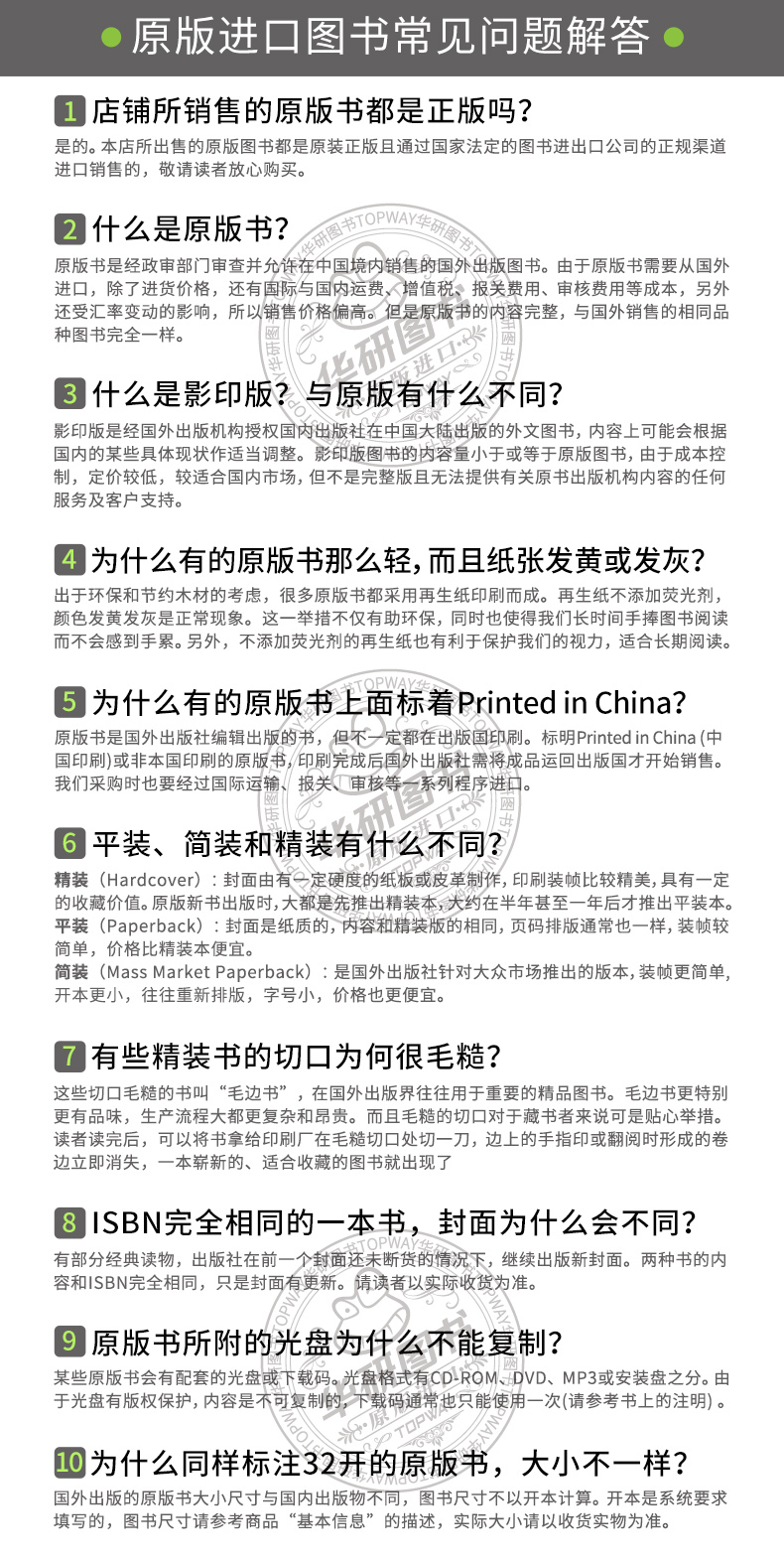
- 华研外语批发分销官方旗舰店 (微信公众号认证)
- 本店是“华研外语”品牌商自营店,全国所有“华研外语”、“华研教育”品牌图书都是我司出版发行的,本店为华研官方源头出货,所有图书均为正规正版,拥有实惠与正版的保障!!!
- 扫描二维码,访问我们的微信店铺
- 随时随地的购物、客服咨询、查询订单和物流...
